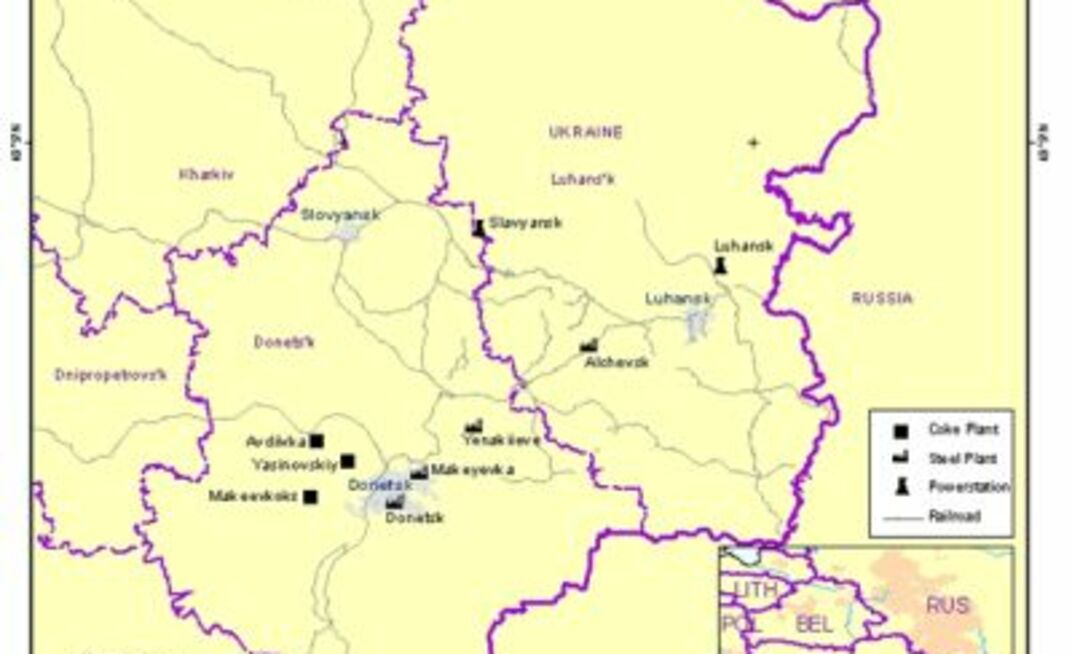Donestsk and Luhansk – the worst affected regions – account for 75% of all coal mining in Ukraine and, as of early September, halted coal production left up to a third of mining activities unavailable.
“We anticipate that, for the remainder of the year, production will total 69 million tonnes of raw coal – 52Mt thermal and 17Mt metallurgical – which equates to a fall of 13% and 29% year-on-year respectively,” the firm said.
Consequently, raw material supplies of metallurgical coal, iron ore and coke to steel mills in Donetsk and Luhansk have become too unreliable to continue production.
“Many operators have since reduced or suspended their operations, affecting 50% of Ukrainian iron and steel-making capacity and 40% of coke-making capacity,” WoodMac said.
“Transport constraints in Eastern Ukraine could also cause a diversion of iron ore volumes for exportation, exerting further downward pressure on an already oversupplied seaborne iron ore market.”
Also at risk is Ukraine's electricity supply courtesy of lower thermal coal supply and outages at coal-fired power plants, caused by the destruction of boilers, damaged transmission lines and bombed rail delivery routes.
As a result, WoodMac forecasts that the country's coal-fired power generation output would fall short of meeting winter demand by 11.4 terawatt-hour, or 5.7Mt of coal.
All is not lost, however, as the firm says the country could compensate for this deficit by diverting greater domestic coal resources to the power sector (an extra 1.5Mt for 3.1TWh), boosting nuclear output (2.1TWh), reducing electricity exports to neighbouring markets (1.4TWh) and increasing coal imports (1.8Mt for 4.9TWh).
“Indeed, a deal has already been agreed with a South African supplier for 1Mt of import coal for the winter months,” WoodMac noted.
“Gas use as a replacement is limited by government policy to restrict consumption and a lack of flexible gas-fired power capacity.
“Yet significant risks remain. Any greater fall in coal production, a tighter domestic power supply-demand balance and a colder-than-average winter could cause the situation to deteriorate even further.”
























